Nestled in the heart of Budapest, where grand boulevards meet the shimmering Danube, stands St. Stephen’s Basilica, a monumental testament to Hungary’s spiritual heritage and architectural splendour. As the largest church in the capital, this neoclassical masterpiece not only dominates the city’s skyline with its soaring 96-metre dome but also holds profound cultural and religious significance. Named in honour of Stephen, Hungary’s first king and patron saint, the basilica serves as a sacred space for worship, a repository of national treasures, and a beacon of artistic achievement. In the following sections, we will explore the basilica’s rich history, architectural marvels, and enduring role in Hungary’s national identity.
Historical Background
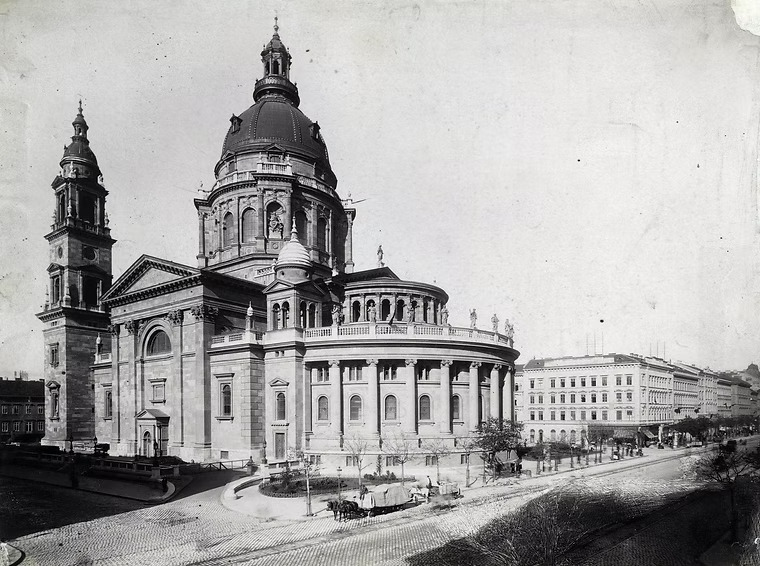
The origins of St. Stephen’s Basilica trace back to the early 19th century, when the rapidly expanding district of Lipótváros in Pest necessitated a prominent place of worship. Following the devastating flood of 1838, which saw many residents seek refuge on the elevated grounds of what is now St. Stephen’s Square, a collective vow emerged to construct a grand church in gratitude. This commitment culminated in the laying of the foundation stone on October 4, 1851, marking the commencement of a monumental project that would span over five decades.
Initially, architect József Hild envisioned a neoclassical design for the basilica. However, the construction faced significant setbacks, most notably the collapse of the nearly completed dome in 1868 due to structural deficiencies. This disaster prompted the appointment of Miklós Ybl, who reimagined the basilica in a neo-Renaissance style, reinforcing its structural integrity. Upon Ybl’s death in 1891, József Kauser took over, overseeing the completion of the interior and decorative elements. The basilica was finally consecrated on November 9, 1905, and the ceremonial placement of the keystone occurred on December 8, 1906, in the presence of Emperor Franz Joseph I.
Named in honor of Stephen I, Hungary’s first king and a pivotal figure in the nation’s Christianization, the basilica stands as a testament to Hungary’s religious and cultural heritage. King Stephen, canonized in 1083, is revered for establishing the Hungarian state and promoting Christianity. His mummified right hand, known as the “Holy Right,” is enshrined within the basilica, attracting pilgrims and visitors alike.
Architectural Significance
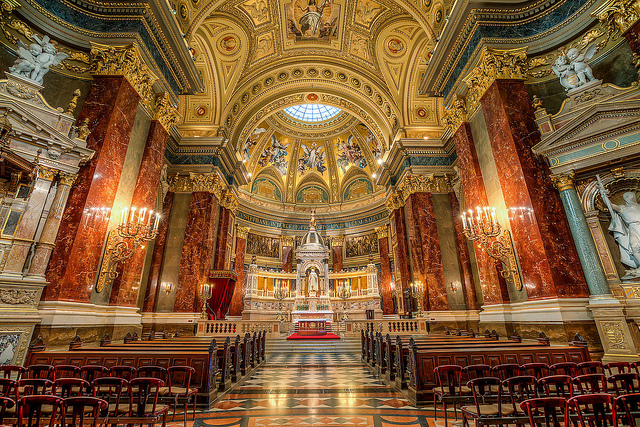
St. Stephen’s Basilica stands as a testament to neoclassical architecture, characterized by its grandeur, symmetry, and homage to classical antiquity. The design features a Greek cross floor plan, a hallmark of neoclassical church architecture, emphasizing balance and proportion. The façade is adorned with imposing Ionic columns and a triangular pediment, elements reminiscent of ancient Greek temples, which convey a sense of solemnity and reverence.
Dominating the Budapest skyline, the basilica’s central dome rises to a height of 96 meters, matching that of the Hungarian Parliament Building. This parity symbolizes the equal importance of spiritual and secular life in Hungary. The dome’s design draws inspiration from Renaissance and Baroque traditions, featuring a coffered interior and a lantern that allows natural light to illuminate the space below.
Flanking the central dome are two bell towers, each contributing to the basilica’s symmetrical appearance. The southern tower houses the Great St. Stephen Bell, the largest in Hungary, weighing over 9 tons. The bell’s deep tones resonate during significant national and religious events, adding to the basilica’s ceremonial importance.
The interior of the basilica is equally impressive, featuring a rich palette of materials and artistic details. Approximately 50 types of marble are used throughout, complemented by gilded stucco, intricate mosaics, and stained glass windows. The main altar, crafted from white Carrara marble, showcases a statue of St. Stephen by sculptor Alajos Stróbl, a piece that required special papal permission due to its unconventional placement.
The basilica’s construction spanned over five decades, involving three prominent Hungarian architects. József Hild initiated the project, laying the neoclassical foundation. Following structural challenges, Miklós Ybl took over, infusing the design with neo-Renaissance elements and ensuring structural integrity. After Ybl’s death, József Kauser completed the basilica, overseeing the final decorative touches and bringing the monumental vision to fruition.
Cultural and Religious Role
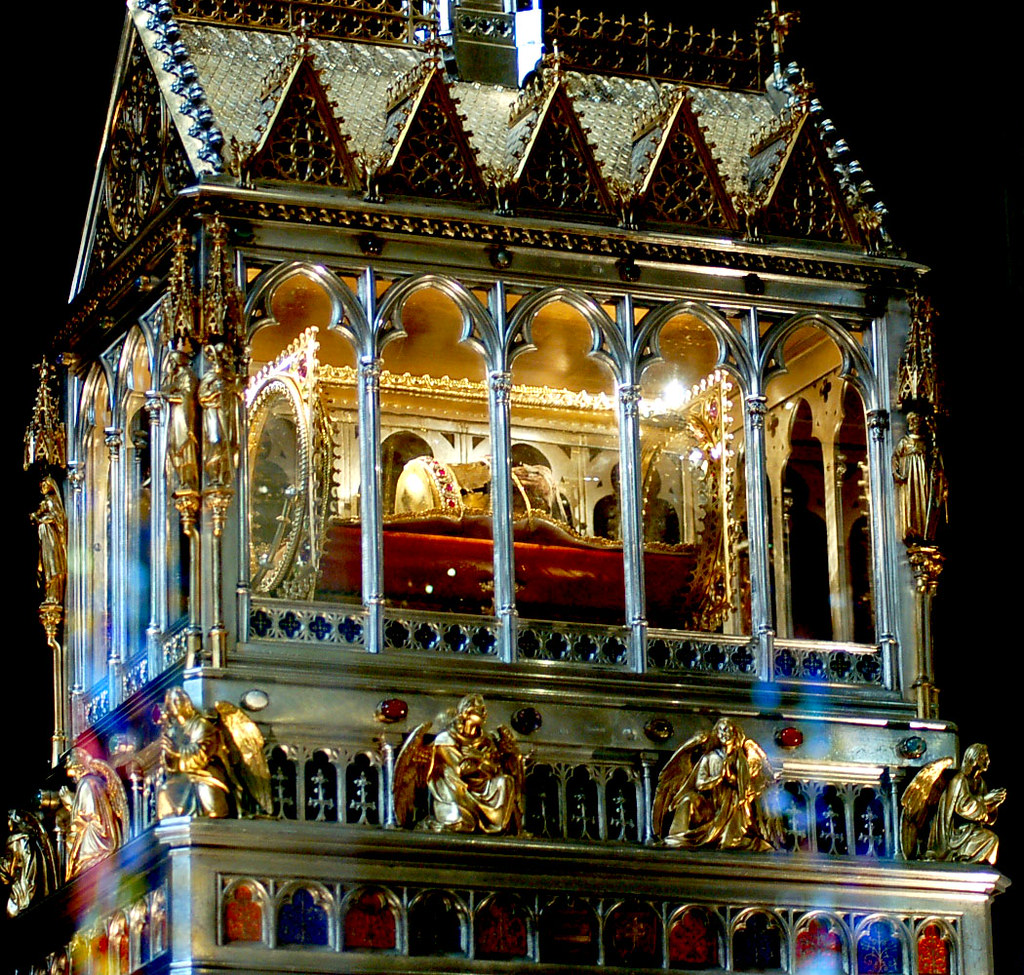
St. Stephen’s Basilica serves as a central pillar of Hungary’s Roman Catholic faith and national identity. As the most significant church in the country, it functions both as a place of worship and a national shrine, drawing pilgrims and visitors alike. The basilica is home to the revered relic of King Stephen I, Hungary’s first monarch, whose mummified right hand is enshrined in the Holy Right Chapel. This relic holds immense importance for Hungarians and is celebrated annually on August 20th during St. Stephen’s Day with a procession through the city.
Beyond its religious significance, the basilica is a vibrant cultural venue renowned for its exceptional acoustics. Regular organ concerts showcase the magnificent pipe organ, featuring performances by esteemed musicians such as Miklós Teleki. These concerts often include classical masterpieces by composers like Bach and Vivaldi, creating an immersive auditory experience within the basilica’s stunning neoclassical architecture.
The basilica’s grandeur and spiritual ambiance make it a popular site for weddings and national celebrations. Its central location and majestic setting provide a picturesque backdrop for ceremonies, while its role in hosting significant events underscores its place in Hungary’s cultural and religious landscape. Whether attending a service, concert, or special occasion, visitors are enveloped in an atmosphere that reflects the nation’s rich heritage and enduring faith.
Visiting the Basilica
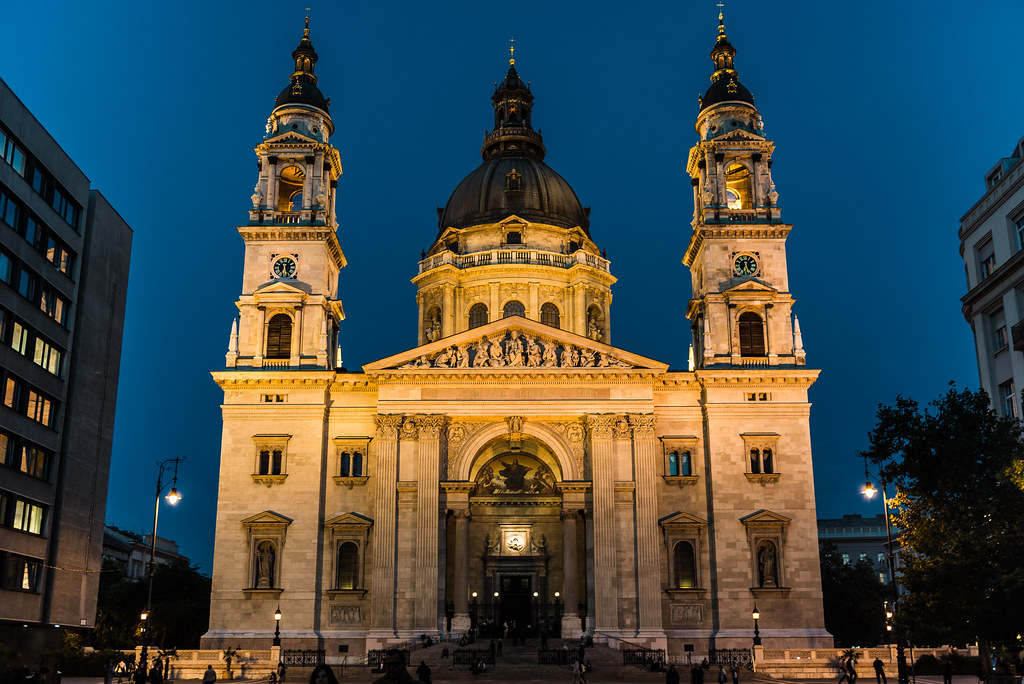
St. Stephen’s Basilica is open to the public throughout the year and offers flexible visiting options to accommodate a range of interests. Standard visiting hours run from 9:00 AM to 5:00 PM Monday to Saturday, and from 1:00 PM to 5:00 PM on Sundays.While entry to the main church was traditionally donation-based, there is now a structured ticket system effective from January 6, 2025.
An individual ticket for the church alone costs 2,400 HUF for adults, with reduced prices for students, seniors, and children under 18. Children under six, religious officials, group leaders, and persons with disabilities may enter free of charge. Combination tickets that include access to the panoramic terrace and treasury are available for 6,200 HUF (adult rate), with group and family discounts provided.
The panoramic terrace offers sweeping views of Budapest and is accessible via elevator and a final staircase section.Admission to this level is part of the full ticket or can be purchased separately for 4,500 HUF. Inside, the basilica also houses a treasury featuring liturgical relics, vestments, and ecclesiastical artifacts that illustrate Hungary’s Christian heritage.
Guided tours are available in both Hungarian and foreign languages, priced separately from admission. Groups of up to 40 people can reserve a church-only tour for 30,000 HUF (Hungarian) or 35,000 HUF (foreign languages), while full-access tours are 38,000 HUF and 43,000 HUF respectively. Reservations must be made at least 72 hours in advance, and cancellations within that period are free of charge.
Visitors should dress modestly—shoulders and knees must be covered, and hats should be removed upon entry. Paper shawls are available on-site to ensure compliance. Whether for prayer, history, or breathtaking views, the basilica ensures a memorable and well-structured experience for all.
Symbol of National Identity
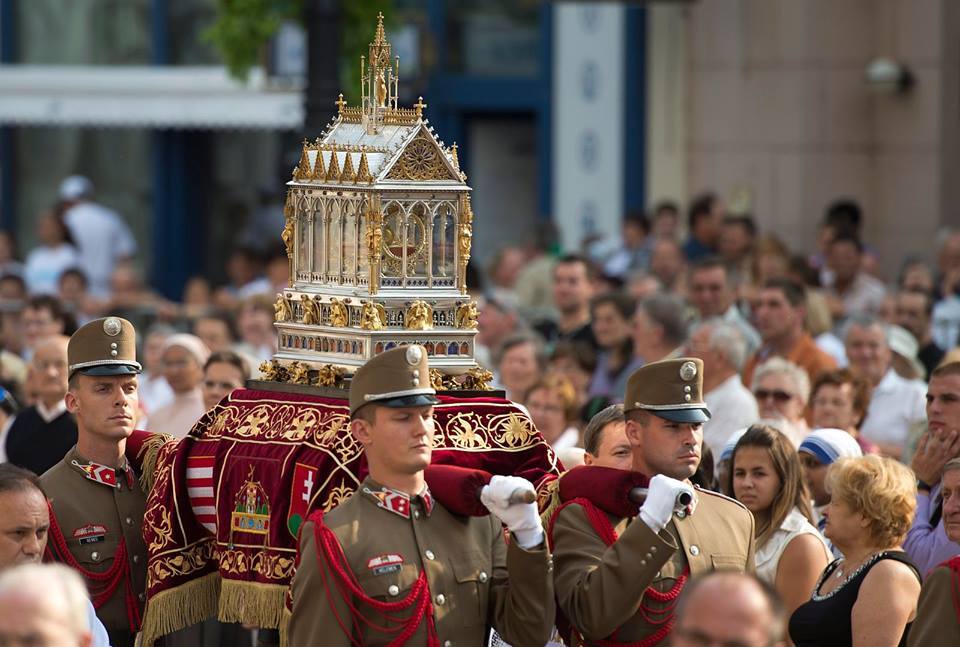
St. Stephen’s Basilica transcends its architectural grandeur to embody the enduring spirit of the Hungarian nation. Dedicated to Stephen I, the first king of Hungary, the basilica stands as a testament to his pivotal role in unifying the country and establishing Christianity as its cornerstone. Crowned in the year 1000 with a diadem sent by Pope Sylvester II, Stephen’s reign marked the transformation of Hungary into a Christian state, laying the foundations for its enduring national identity.
The basilica houses the “Holy Right,” the mummified right hand of King Stephen, preserved in a reliquary and revered as a national relic. This sacred artifact symbolizes the nation’s spiritual heritage and is central to the annual St. Stephen’s Day celebrations on August 20th, commemorating the foundation of the Hungarian state.
Beyond its religious significance, the basilica serves as a unifying symbol for the Hungarian people. Its prominent location in Budapest and its role in national ceremonies underscore its importance as a beacon of cultural and historical continuity. Through times of change and challenge, St. Stephen’s Basilica remains a steadfast emblem of Hungary’s identity and resilience.
St. Stephen’s Basilica stands as a harmonious fusion of spiritual reverence, architectural brilliance, and national pride. Its neoclassical design, crowned by a majestic dome, reflects Hungary’s rich artistic heritage, while its dedication to King Stephen I underscores the nation’s foundational Christian values. As a living monument, the basilica continues to inspire awe and devotion, making it an essential destination for anyone seeking to experience the cultural and historical essence of Budapest.

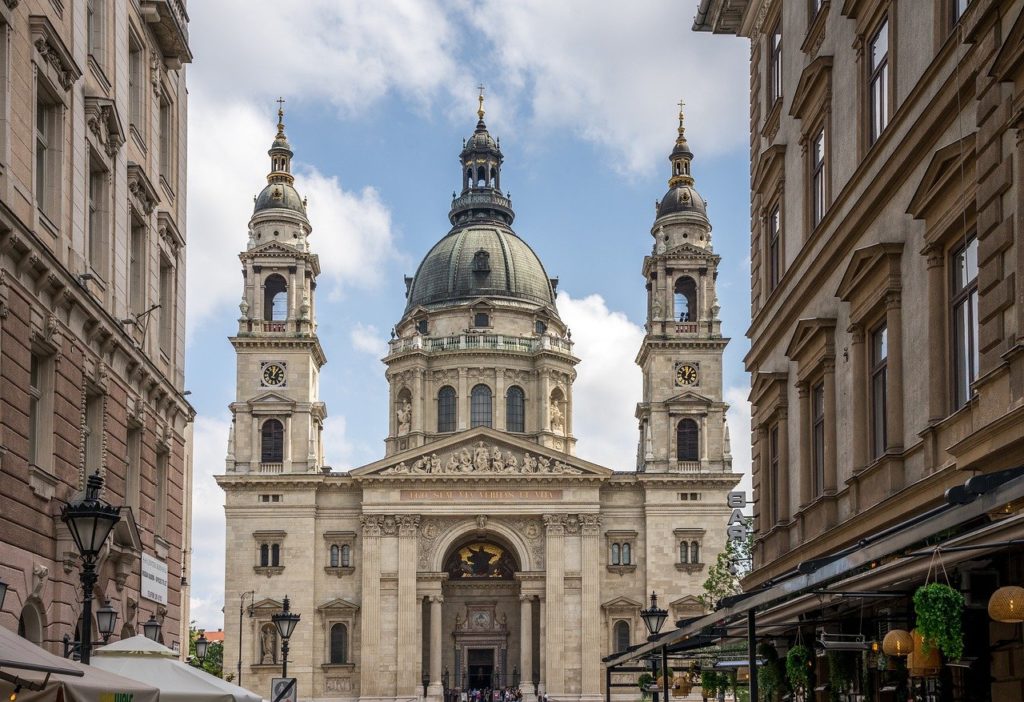
Comments are closed.